 Movies and TV
Movies and TV  Movies and TV
Movies and TV  Health
Health 10 Miraculous Advances Toward Curing Incurable Diseases
 Miscellaneous
Miscellaneous 10 Undeniable Signs That People’s Views of Mushrooms Are Changing
 Animals
Animals 10 Strange Attempts to Smuggle Animals
 Travel
Travel 10 Natural Rock Formations That Will Make You Do a Double Take
 Movies and TV
Movies and TV 10 Actors Hidden in Your Favorite Movies
 Our World
Our World 10 Science Facts That Will Change How You Look at the World
 Pop Culture
Pop Culture 10 Incredible Female Comic Book Artists
 Crime
Crime 10 Terrifying Serial Killers from Centuries Ago
 Technology
Technology 10 Hilariously Over-Engineered Solutions to Simple Problems
 Movies and TV
Movies and TV 10 Movie Adaptions That Brought Popular Songs to Life
 Health
Health 10 Miraculous Advances Toward Curing Incurable Diseases
 Miscellaneous
Miscellaneous 10 Undeniable Signs That People’s Views of Mushrooms Are Changing
Who's Behind Listverse?

Jamie Frater
Head Editor
Jamie founded Listverse due to an insatiable desire to share fascinating, obscure, and bizarre facts. He has been a guest speaker on numerous national radio and television stations and is a five time published author.
More About Us Animals
Animals 10 Strange Attempts to Smuggle Animals
 Travel
Travel 10 Natural Rock Formations That Will Make You Do a Double Take
 Movies and TV
Movies and TV 10 Actors Hidden in Your Favorite Movies
 Our World
Our World 10 Science Facts That Will Change How You Look at the World
 Pop Culture
Pop Culture 10 Incredible Female Comic Book Artists
 Crime
Crime 10 Terrifying Serial Killers from Centuries Ago
 Technology
Technology 10 Hilariously Over-Engineered Solutions to Simple Problems
10 Of The Most Powerful Photographs From The Last Decade
The 2010’s, as they’re now being called, have been eventful to say the least. If we’d have to sum them up, we’d say that it was a decade of widespread – and permanent—change around the world. Economic instability, civil wars and general social unrest dominated the headlines in many countries, though we also made massive strides in areas like space exploration, medicine and memes. From the emancipation of the gay community around the world (at least on paper) to the violent revolts in the Middle East that changed the region forever, the decade was a rather versatile mix of groundbreaking events.
See Also: 10 Incredible Photographs That Won The Pulitzer Prize
This was also the decade when journalism went out of the professional newsroom and on to the streets. Because of the rapid rise of social media and widespread accessibility to mobile phones, some of the best coverage of major events of the decade came via photographs and videos captured by amateur bystanders, rather than acclaimed photo journalists.
From widely-shared images of the Arab Spring to our first photographic glimpse of the surface of Mars, here’s the decade summed up with ten of its most powerful photographs.
10 Chile Protests, 2019
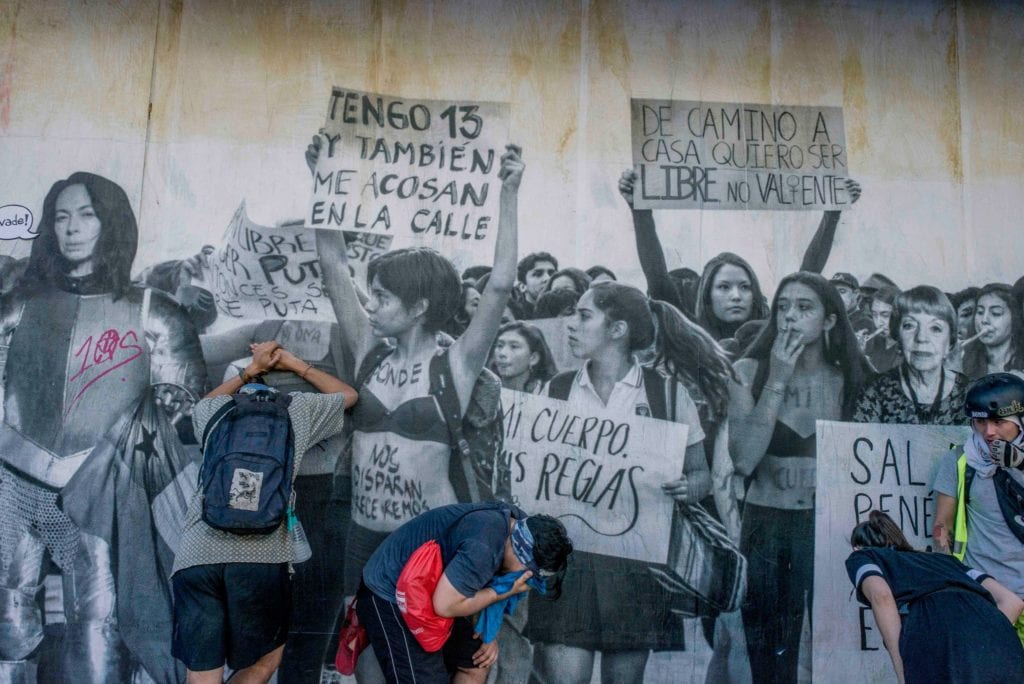
In the photo: Protesters in Chile below a mural in Santiago, protecting themselves from tear gas in the midst of a brutal crackdown by the police and military forces.
2019 alone saw many parts of the world—from Hong Kong to Ethiopia to Venezuela—erupt in protests and uprisings against their respective governments on a variety of issues. Few of them, however, have been as impactful and popular as the one in Chile. It’s being called Chile’s worst unrest in recent decades, which is saying something as Chile – much like the rest of South America – has seen its fair share of unrest in the past.
2019’s protests, however, erupted due to a wide range of issues that had been gradually developing over the years; from rising inequality to excessive privatization of education. They have been unprecedented in terms of participation, especially from the youth. At its peak, around one million people were on the streets, though that hasn’t sat too well with the government.The military and police forces have been accused of human rights violations like sexual assault, torture, excessive use of force and extra judicial killings of journalists. The crackdown has been so brutal that in many cases, tear gas or rubber pellets caused many people to go partially or fully blind.
9 Eruption Of Eyjafjallajökull, 2010

In the photo: Ash and lava erupting out of Iceland’s Eyjafjallajokull in the backdrop of Northern Lights.
While it may sound like a non-event to most non-Europeans, the eruption of Eyjafjallajokull in Iceland dumped a large amount of ash into Europe’s atmosphere, and the effects could be felt in far off countries, too. According to some, it caused the largest disruption of air services since World War 2.
The eruption of Eyjafjallajokull also posed other problems. It’s usually followed by the eruption of its sister volcano, Katla, within a span of a decade, as their magma chambers are interconnected. That is rather concerning, as that one is assumed to be far deadlier and more impactful, and its eruption could even have global consequences.
8 Baton Rouge Protests, 2016

In the photo: A young woman with a rose standing against a fully-armed anti-riot police force, as protests against racially-motivated police brutality intensified in the U.S.
The photograph isn’t just significant because of the moment it was taken, it also sums up the state of civil unrest around the world at that time. Peaceful protesters have been, throughout the decade, met with excessive force and the full might of the state’s armory on little or no provocation, from Ukraine to Syria to Iran. While the death count wasn’t as high in the U.S. and many other European countries, police brutality took the form of a spate of unprovoked and unauthorized murders, which were often racially motivated. Protests against it were also often met with force.
It intensified the conversation around the appropriate amount of force police should be allowed to use, causing many states to take a variety of measures like installing permanent cameras on all police vehicles.
7 Osama’s Death, 2011
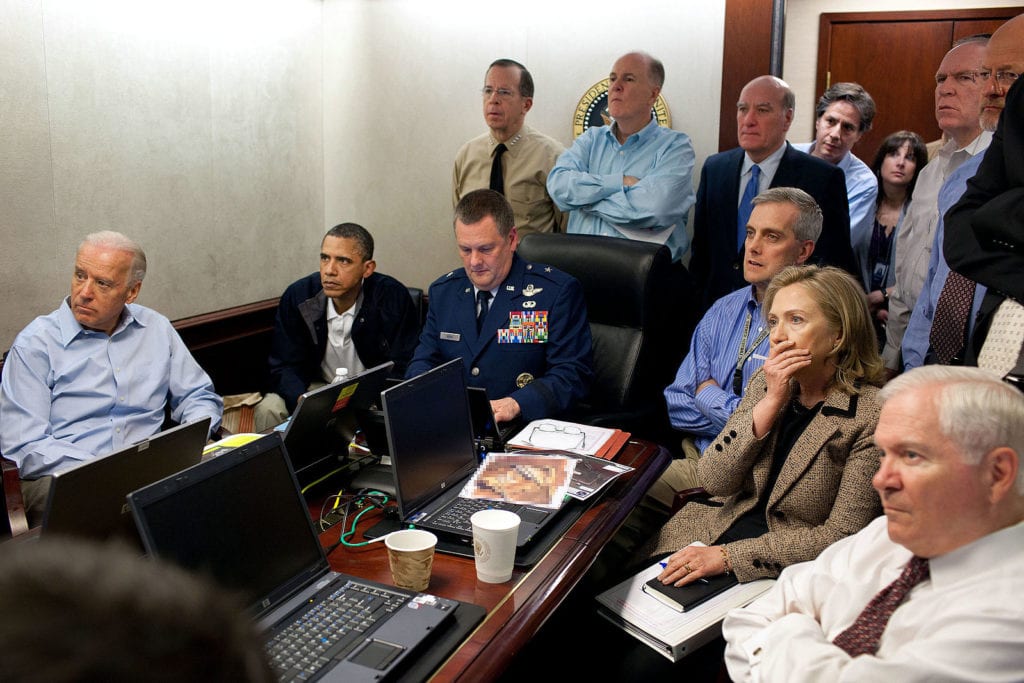
In the photo: Former U.S. president Barack Obama and his Security team receiving live updates on Osama’s capture and eventual death.
By far one of the most iconic photos of the last decade, it was a visual representation of the culmination of the War on Terror, and its effects were felt across the world. Many countries other than the U.S. participated in the war, though it was Osama’s capture and punishment by death by U.S. Marines that really put the conflict to an end. That particular conflict, at least, as terrorism around the world is still going as strong as it was in 2011. Regardless, bringing Laden to justice did a lot to lower the morale of Al Qaeda’s lower ranks, bringing relative stability to many parts of the Middle East and South Asia.
6 Libyan Revolution, 2011
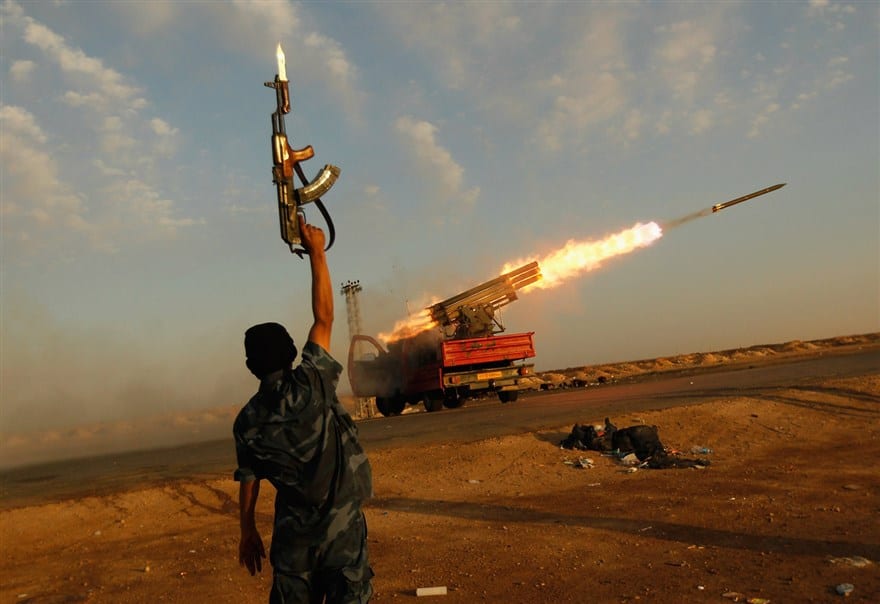
In the photo: A rebel fighter celebrates as they move in on the loyalist forces in Ajdabiya, Libya.
For the Middle East, the decade started with a series of violent uprisings – now collectively known as the Arab Spring—in many countries. The issues were as diverse as the people out on the streets across the vast region, and its effects could still be seen in socio-political movements around the world. It was the first revolution – and a successful one, too, in many countries – that was broadcast almost entirely through social media; a trend that would be adopted in all subsequent protests of the decade.
What started as peaceful organization of protesters in Morocco, Tunisia and nearby countries in early 2010 soon snowballed into a widespread series of violent and armed uprisings against deep-seated structural issues. Some of the most violent fighting took place in Libya – as well as Syria, though we’ll get to that one in a bit – where large regions of the country took up arms against Muammar Gaddafi’s government. He was eventually ousted and rather brutally killed by the rebels, as a final act of defiance against what the people saw as an authoritarian and corrupt government.
The ripples of the Libyan revolution – and the Arab Spring in general – could be still felt around the world. Many places in the Middle East are still reeling from the after-effects of the various wars. Moreover, massive chunks of the civilian population have been rendered homeless – and, in some cases, stateless – due to consistent, still-ongoing conflict across the region.
5 Paris Terrorist Attacks, 2015
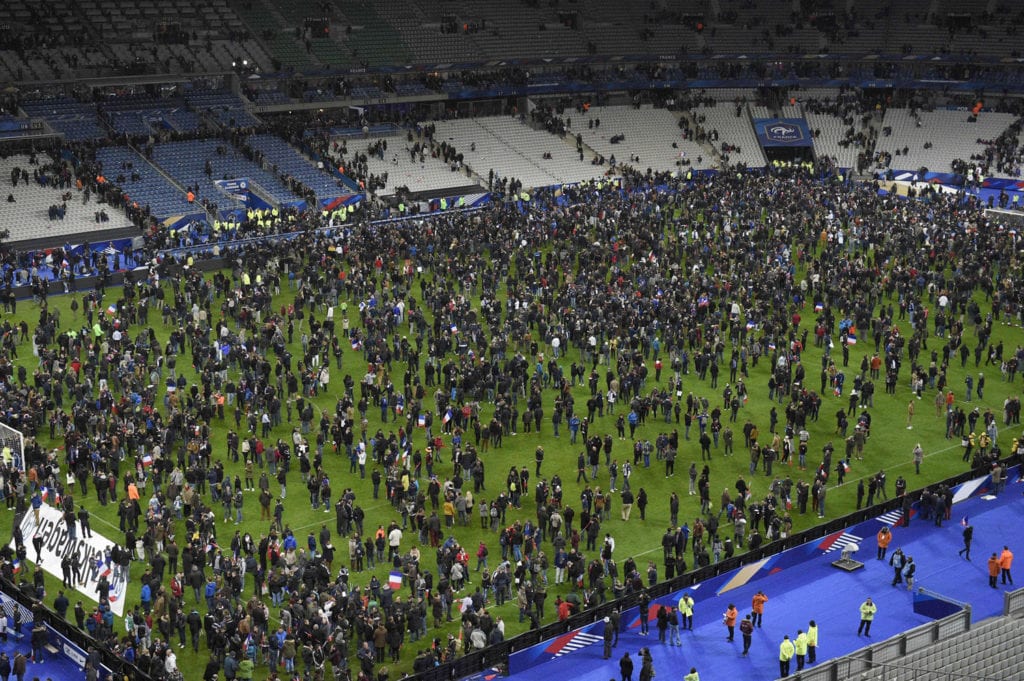
In the photo: Spectators move into a soccer pitch as a series of explosions are heard outside the Stade de France, marking the beginning of the deadliest terrorist attacks in France’s history.
There were few events in the decade that changed geo-politics—especially in the western world—like the 2015 terrorist attacks in Paris. While the city had already experienced Charlie Hebdo shootings earlier in the year, the coordinated attacks by ISIS at multiple civilian centers in Paris held a more ominous warning – no place, even the heart of Western Europe, is safe from ISIS. OF course, ISIS has been all but defeated by now, though it was still a strong force back in 2015. Moreover, the attacks influenced far more profound changes in European politics and public opinion.
The Paris attacks turned popular opinion against immigrants, as this was also the year that saw a resurgence in the popularity of far-right parties across Europe. This was also the year that many European countries started wondering if keeping borders open was the best idea. This debate on immigration has already had far-reaching consequences, like Brexit, and continues to shape policymaking around the world.
4 Gulf of Mexico Oil Spill, 2010
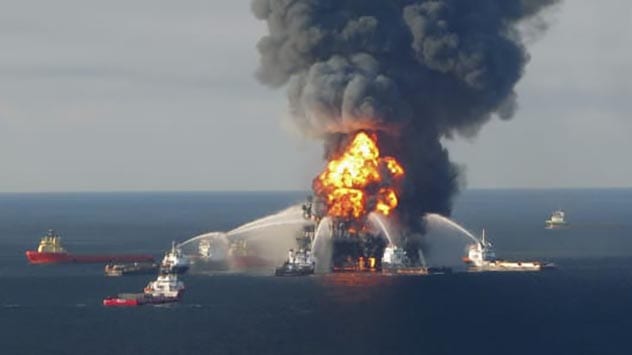
In the photo: Fire crews trying to contain the fire on the offshore oil rig Deepwater Horizon, just off the shore of Louisiana.
The Deepwater Horizon was, at the height of its operations, one of BP’s biggest oil rigs, which is what made its explosion and eventual oil spill into the Gulf of Mexico even more concerning. It has been widely claimed to be the biggest environmental disaster in the history of the U.S., pumping nearly 210 million gallons of oil in the ocean. While we don’t even know the full extent of its impact yet, we know that it has caused widespread abnormalities in the already-endangered species found in the region and devastated entire ecosystems in the affected regions.
The spill sparked a conversation on the shadier operations of Big Oil around the world, as public opinion – especially in the Southeast states most impacted by the spill – quickly turned against offshore drilling and fracking.
3 Unite The Right Rally, 2017
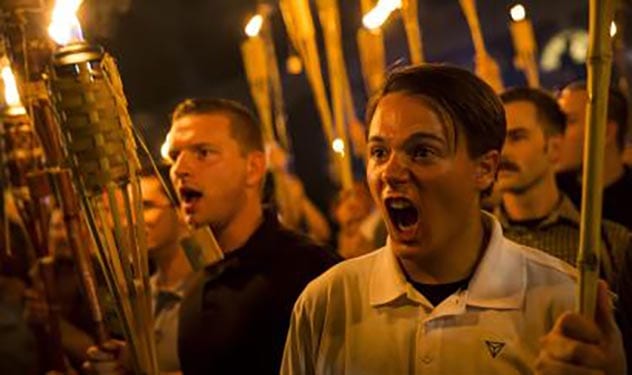
In the photo: The image that became inherently associated with the far-right Unite the Right rally in Charlottesville.
The Unite the Right in Charlottesville was seen as the biggest show of strength from the far right around that time, though that’s not accurate. Far bigger – and far Nazi-er – rallies had already taken place in European countries like Poland and Germany. The Charlottesville rally – initially called to protest the removal of Confederate General Robert. E. Lee –was noteworthy for bringing the growing divide between the global right and left to global attention.
The rally was criticized for its racist and discriminatory slogans, and, interestingly, many of the people identified from the photographs eventually lost their jobs. Regardless, the rally—or rather the fierce opposition to it from local student groups—ended up making an impact on the national psyche. The divide between the protesters and counter protesters reached its peak when a Unite the Right protester drove his car into a large group of protesters, killing one person and injuring many others. The rally drew criticism – as well as praise, depending on the country it was coming from – from state leaders around the world.
2 The Afghan Woman, 2010
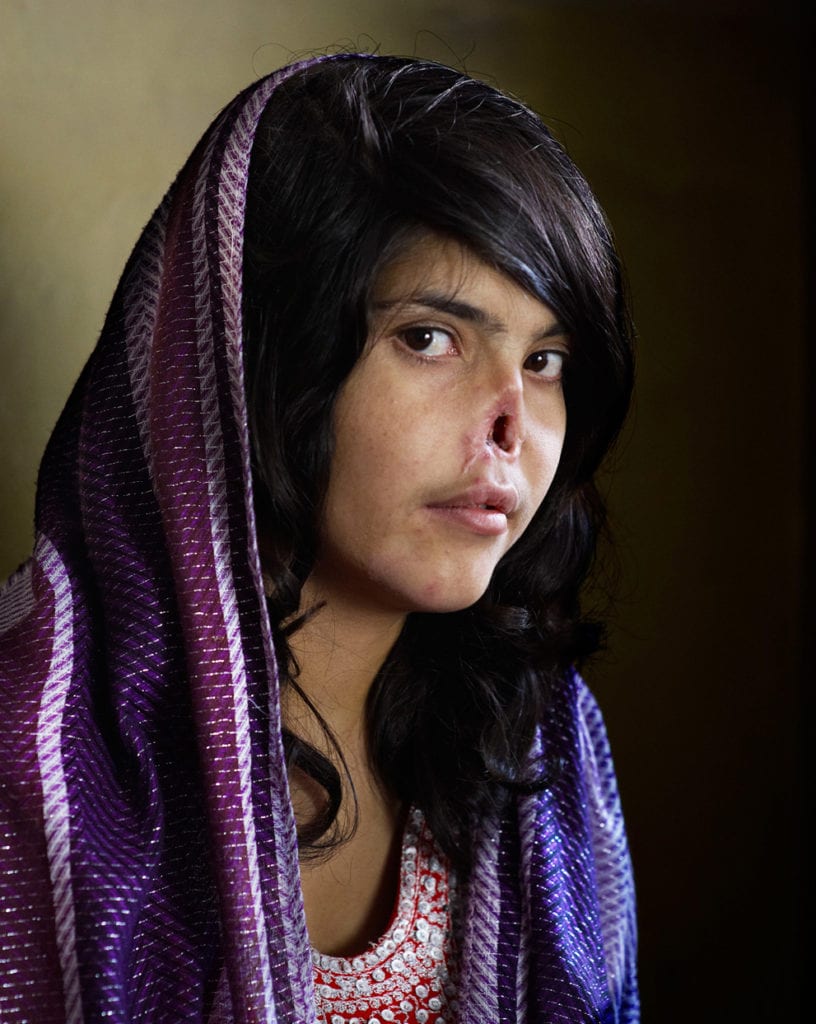
In the photo: Bibi Aisha features on the cover of TIME magazine, sparking a global conversation around women’s rights, especially in conflict zones.
There are few photos that get imprinted in public memory like this one taken by Jodi Bieber in 2010. It depicts a young Afghan girl called Bibi Aisha, who was around 18 years old at the time it was taken. Her nose and ears had been mutilated by her husband and his family members, and was left for dead before being rescued by American aid workers nearby.
The photograph served as a global reminder of the atrocities women still face around the world, and has won many coveted awards – including the World Press Photo, 2010—since it was published on the cover of TIME magazine.
1 Syrian Civil War, 2011—present
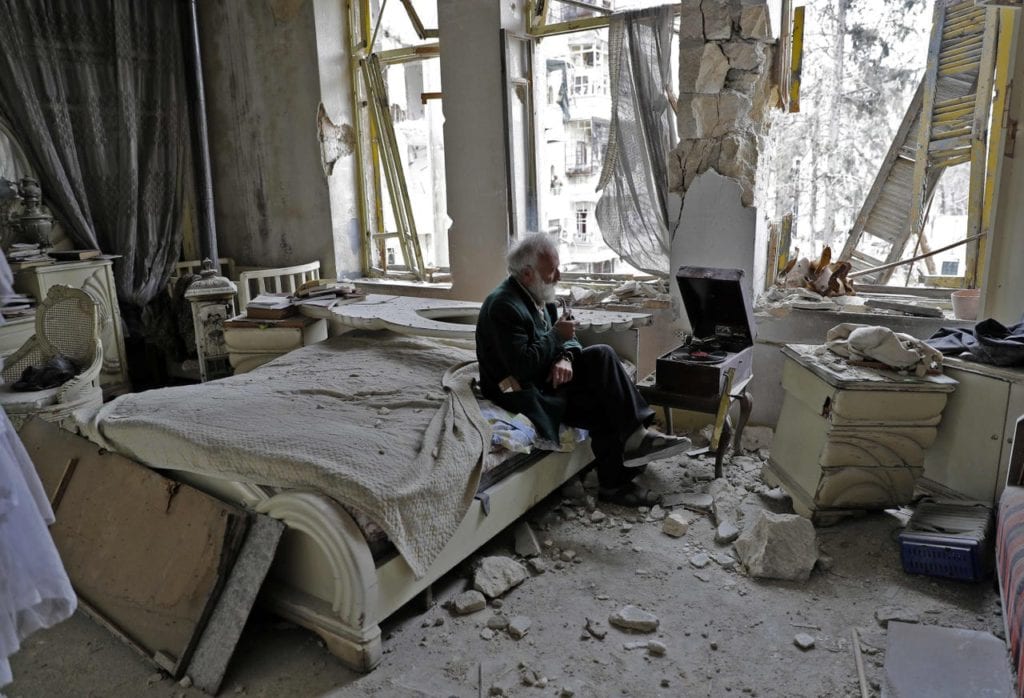
In the photo: A 70-year old Mohammad Mohiedine Anis sits in his destroyed bedroom and listens to some music on his vinyl player, as the government’s forces take back many of the rebel-held areas across Syria with unprecedented force.
The Syrian Civil War has been one of the – if not THE – most pivotal events of the last decade. While civil unrest and violence had been on the rise in Syria for quite some time, the sheer degree of violence unleashed by both the sides since the beginning of the war in 2012 was unprecedented, in scale as well as ferocity. The war against Assad’s regime has been so huge in scale that some experts have even compared it to a world war, as many countries around the world have had a role to play in it. Geo politics aside, it also caused huge changes in the demographics of the region, as well as politics of other countries.
For one, the exodus of millions of refugees fleeing from the war has massively contributed to other major world events, and continues to be a talking point in many countries. More importantly, though, the Syrian Civil War saw the involvement of many countries in proxy roles, giving it a sort of a ‘world war’ vibe. In its early days, American fighters accidentally gunning down Russian or Iranian planes was a real possibility, which would have turned the limited conflict into a global war. While it started as an uprising, much like the other revolts of the Arab Spring, it soon turned into a sectarian conflict with far-reaching and devastating consequences for the region.
For more lists like this, check out 10 Calm Photographs With Awful Backstories, and 10 Of The Most Important Photographs In History








